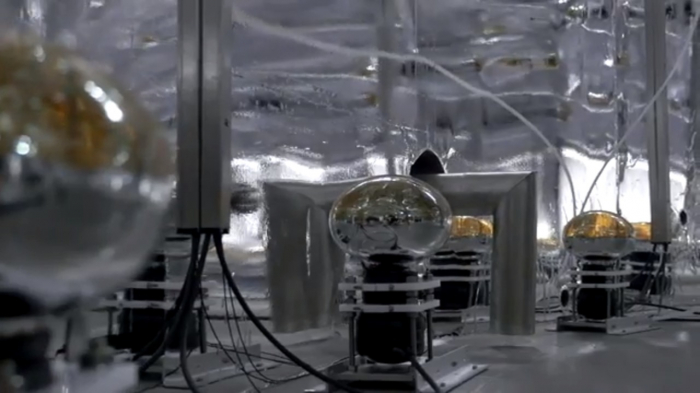The process takes more than one trillion times the age of the universe. And it has been spotted by scientists for the first time.
The breakthrough discovery was made by scientists who worked with a special instrument, built to track down dark matter, the most elusive particle in the universe.
The all-important event was the radioactive decay of xenon-124.
"We actually saw this decay happen. It's the longest, slowest process that has ever been directly observed, and our dark matter detector was sensitive enough to measure it," said Ethan Brown, an assistant professor of physics at Rensselaer, and co-author of the study.
"It's an amazing to have witnessed this process, and it says that our detector can measure the rarest thing ever recorded."
The research came from the XENON Collaboration, which runs an instrument known as XENON1T. That is a 1,300-kilogram vat fille dwith super-pure liquid xenon, which can be shielded from cosmic rays by being buried in water, 1,500 meters beneath the Gran Sasso mountains in Italy.
It is run by scientists looking for dark matter, which is five times more abundant than ordinary matter, but has never been directly observed. They hope to study it by watching for the little flashes of light that are created when particles hit the xenon inside the detector.
Though it is looking for the interaction between dark matter particles and the nucleus inside the xenon atoms, it can actually see any signals that happen inside the tub.
It was one of those interactions that scientists spotted, when they saw a proton inside the nucleus of a xenon atom change into a neutron. That happens as a consequence of a very rare event: when a proton absorbs two electrons, which is called "double-electron capture".
That can only happen when two of those electrons are right next to the nucleus, at exactly the right time. That is "a rare thing multiplied by another rare thing, making it ultra-rare", Brown said.
Scientists spotted those electrons re-arranging as they made way for the two electrons that had been absorbed into the nucleus.
"Electrons in double-capture are removed from the innermost shell around the nucleus, and that creates room in that shell," said Brown. "The remaining electrons collapse to the ground state, and we saw this collapse process in our detector."
The discovery allows scientists to see the half-life of the xenon isotope directly, watching its radioactive decay as it happens. Such an achievement has never been possible before, the researchers said.
"This is a fascinating finding that advances the frontiers of knowledge about the most fundamental characteristics of matter," said Curt Breneman, dean of the School of Science. "Dr. Brown's work in calibrating the detector and ensuring that the xenon is scrubbed to the highest possible standard of purity was critical to making this important observation."
The Independent
More about: science
















































